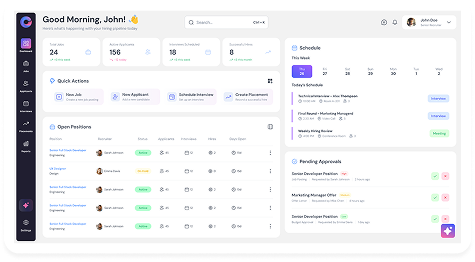Understanding the distinctions between HRMS, HRIS, and HCM is crucial for any HR professional looking to optimize their processes. While these acronyms are often used interchangeably, they represent different types of HR software with varying capabilities. This post will define each system, highlight their core functions, and explain which solution is right for your organization.
What is an HRIS?
An HRIS, or Human Resource Information System, is the most fundamental of the three. It serves as a central database for managing employee information. Think of it as the digital filing cabinet for your workforce.
Core Functions & Benefits
An HRIS is designed to handle core administrative HR tasks. Its primary function is to store, manage, and process detailed employee data.
Key functions include:
- Employee Database Management: Storing personal information, job titles, and contact details.
- Payroll Administration: Processing salaries, taxes, and deductions.
- Benefits Administration: Managing enrollment in health insurance and retirement plans.
- Compliance Reporting: Generating reports required by government regulations.
The main benefit of an HRIS is its ability to digitize and automate basic HR tasks, which reduces administrative work and improves data accuracy.
What is an HRMS?
An HRMS, or Human Resource Management System, includes all the functionalities of an HRIS but adds features related to managing talent and time. It provides a more integrated approach to HR by combining core administrative functions with talent management tools.
Expanded Functions & Benefits
An HRMS builds on the foundation of an HRIS by incorporating more sophisticated capabilities.
Key functions include:
- All HRIS Features: Payroll, benefits, and employee data management.
- Time and Labor Management: Tracking employee hours, attendance, and scheduling.
- Recruiting and Onboarding: Managing job applications, screening candidates, and streamlining the onboarding process.
By integrating these features, an HRMS offers greater efficiency than a standalone HRIS. It helps organizations not only manage their workforce but also track and analyze employee time and productivity.
What is an HCM?
HCM, or Human Capital Management, is the most comprehensive solution. It encompasses all the features of an HRIS and HRMS while adding a strategic layer focused on talent management and employee engagement. HCM software is designed to manage the entire employee lifecycle, from hiring to retirement.
Comprehensive Capabilities & Strategic Focus
HCM platforms treat employees as valuable assets (human capital) and provide tools to maximize their potential and value to the organization.
Key functions include:
- All HRMS Features: Core HR, payroll, time tracking, and recruitment.
- Performance Management: Setting goals, conducting performance reviews, and providing feedback.
- Learning and Development: Offering training programs and professional development opportunities.
- Succession Planning: Identifying and developing future leaders within the organization.
- Compensation Management: Aligning employee compensation with performance and company goals.
The strategic focus of HCM is to improve talent acquisition, enhance the candidate experience, and drive employee engagement, ultimately boosting business performance.
Key Differences at a Glance
This table summarizes the main distinctions between HRIS, HRMS, and HCM.
| Feature/Function | HRIS (Human Resource Information System) | HRMS (Human Resource Management System) | HCM (Human Capital Management) |
|---|---|---|---|
| Primary Focus | Core HR Administration | Core HR + Time & Talent | Strategic Talent Management |
| Payroll & Benefits | Yes | Yes | Yes |
| Time & Attendance | No | Yes | Yes |
| Recruiting & Onboarding | No | Yes | Yes |
| Performance Management | No | No | Yes |
| Learning & Development | No | No | Yes |
| Succession Planning | No | No | Yes |
The Oorwin Solution
Navigating the complexities of HR requires a unified platform that can handle everything from recruitment to workforce management. Oorwin integrates sales, recruitment, and HR processes into a single, AI-powered system. Our platform helps you streamline hiring, manage onboarding, and track employee performance, all while delivering an exceptional candidate experience. Oorwin empowers your teams with unified data and real-time insights to make smarter, more strategic decisions.
Finding the Right System for You
Choosing between an HRIS, HRMS, and HCM depends on your organization’s size, complexity, and strategic goals.
- An HRIS is ideal for small businesses that need to automate core administrative tasks.
- An HRMS suits mid-sized companies looking to manage time and basic talent acquisition more effectively.
- An HCM is built for larger organizations that require a comprehensive, strategic approach to managing their workforce.
By understanding these differences, you can select a system that not only meets your current needs but also supports your future growth.

